The final March sentiment Index—the University of Michigan Sentiment Index—indicated that confidence has stumbled to a two-year low and long-term inflation expectations jumped to a 32 year high as anxiety over tariffs continue to build.
Consumers expect prices to rise at an annual rate of 4.1% over the next five to 10 years, the highest since February 1993 and above the 3.9% preliminary reading. They saw costs rising 5% over the next 12 months, the highest since 2022.
Even though this data is an outlier, it may be a harbinger of statistics to come as the proposed tariff policy appears to change on a moment’s notice.
As noted last week, the “soft data” has been decidedly downbeat in recent weeks, the “hard data” is still suggesting strength.
Equities sold off on the data. The S & P 500 is poised to have the worst quarter since 2022.
The selloff however has been primarily focused in growth companies that dominate the indices’ capitalization. Bloomberg writes “value” is positive for the quarter and value is having its best quarterly run against its growth rival since the market meltdown in 2022.
Growth is about 40% more expensive than growth with many opining that growth is priced to perfection.
Bloomberg further writes the S & P 500 Value Index has outperformed its counterpart on an annual basis only five times in the past two and half decades as growth has outperformed value by a 3:1 margin during this period.
Some have commented that this outperformance of value is long overdue, an environment amplified by the “extremely overcrowded trade of the Magnificent Seven” that has dominated recent market performance.
Commenting on the bond market, Treasuries rallied across the spectrum Friday in the face of Michigan and PCE data—both of which suggests greater inflationary pressures in the immediacy and future—focusing instead on the recessionary nature of tariffs.
The question is whether there will be more evidence for the “stag” part of inflation, i.e. slowing growth. This could be answered this week as there is numerous tier indicators released including the all-encompassing BLS Employment report.
The economic calendar is comprised of numerous top tier indicators such as the JOLTS Job Openings, the ISM Manufacturing, factory and durable good orders, the ADP Private Sector Employment Survey, the ISM Services Index and the BLS labor report.
And then there is April 2…Tariff Day.
Last night the foreign markets were down. London was down 1.32%, Paris down 1.90% and Frankfurt down 1.97%. China was down 0.46%, Japan down 4.05% and Hang Seng down 0.65%.
Dow and NASDAQ futures are down 0.75% and 1.50%, respectively, on tariff fears.
Driven by the rout in technology and mega cap companies, US stocks are poised to have its worst quarter compared to the rest of the world since 1988 according to Bloomberg. As widely noted, domestically the S & P 500’s performance is the worst since 2022.
The 10-year is up 15/32 to yield 4.20%.




